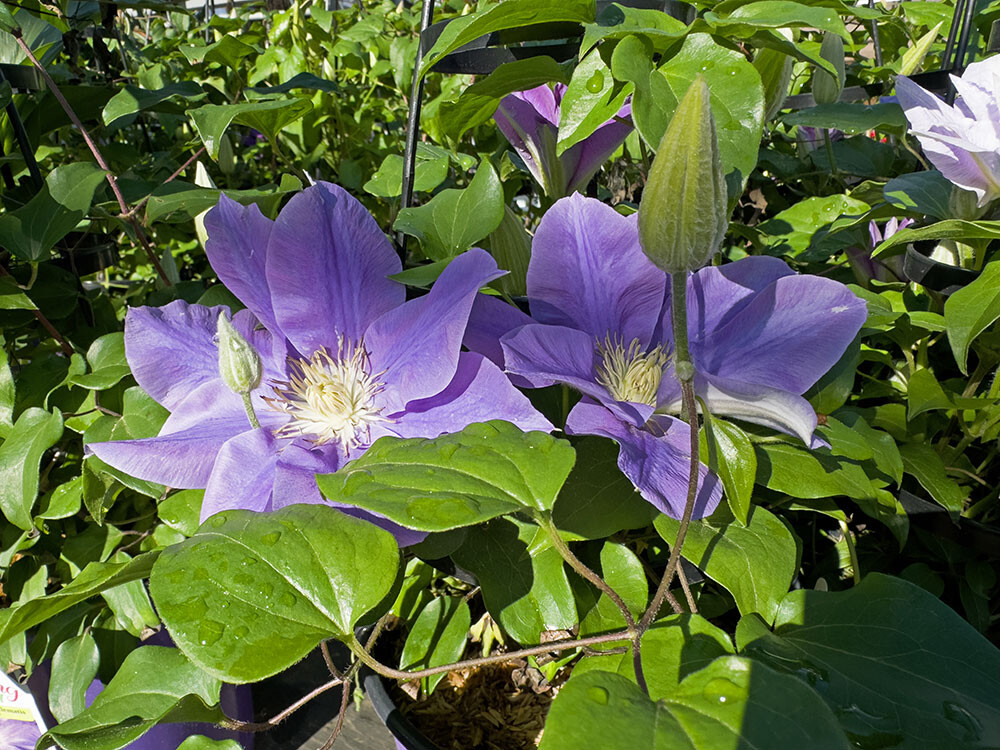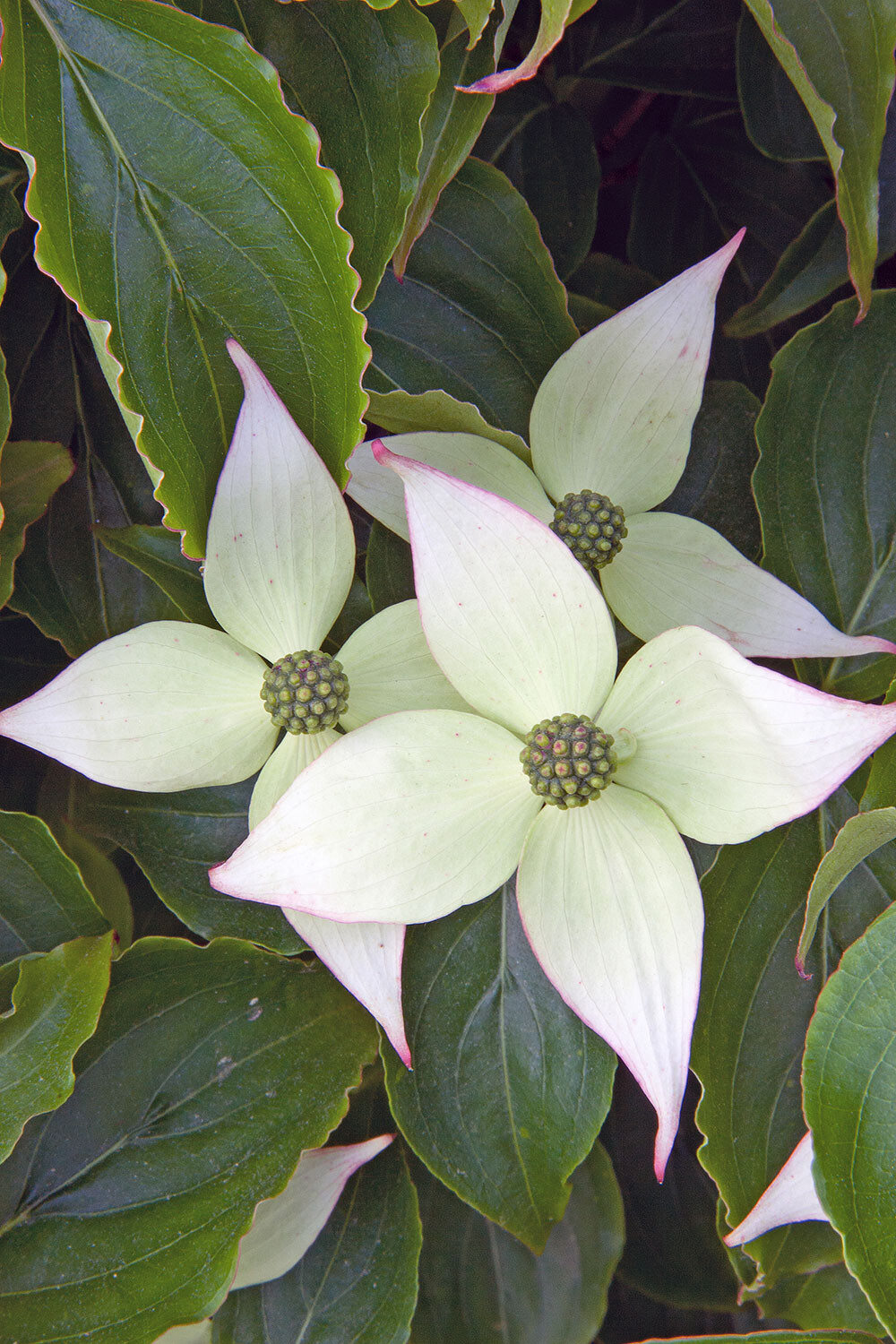I am a big fan of the flowering dogwood (Cornus florida) because it is a native tree and, of course, bears North Carolina’s state flower. And typically topping out at around 15 to 25 feet tall, it is not particularly a space-hogging woody ornamental, meaning planting one could leave room for other woodies — or, heck, even more dogwoods — in your landscape.
If additional dogwoods sound appealing, for a different twist, consider a Kousa. Kousa dogwoods (Cornus kousa) are native to East Asia, and their springtime bloom shows lag three to four weeks behind our native dogwoods. This means after the “regular” dogwood flower-fest wraps up in April, a second act is not far behind if you add a Kousa in the rotation.
Kousa dogwood’s flowers not only open later, but they have their own look, too. Their petals (actually bracts) are stubbier — in an attractive way — and pointed on the ends. In addition, its flowers tend to cluster and flow more, creating pleasant sweeps of blooms made brighter by the tree’s flush backdrop of rich green leaves.
Non-sterile Kousa selections will usually produce berries that mature by autumn’s arrival. The knobby orbs resembling weird raspberries are edible. However, to me, while the inside pulp has a mild apple-like taste, getting past the bitter skin and through the many seeds puts them close to the bottom of my All-Natural Eats list. Birds will eat them, but normally only when the berries are past prime and mushy.
This Far East beauty seems to endure the rays of Southern summer sun better than our indigenous Cornus florida, but it’s still not a bad idea to plant a Kousa in an area that receives at least some soothing shade during the height of the afternoon sear.
While a Kousa can stand more sun, a developing young one won’t tolerate dry conditions because of its shallow root system, so spread mulch to the width of the tree’s canopy and irrigate during the dry times.
Kousa dogwoods aren’t unusual finds at local garden centers or online nurseries. And while plenty of Kousa cultivars mimic the classic, sedate look of our native dogwoods, there are some selections that have added visual interest. Some of my favorites include ‘Wolf Eyes,’ a sassy cultivar with howlin’ bright variegated leaves; ‘Scarlet Fire,’ displaying deep pink blossoms; and ‘Elizabeth Lustgarten,’ an enchanting weeping beauty.
To Do in the Garden

The blooming beauty of clematis
For clematis to put on an impressive bloom show in the garden, you must attend to this divine vine’s essential needs, starting with at least five hours of full sun a day. Its root zone, however, should be kept cool and moist (not boggy) as the summer heat builds. Plant in well-worked, heavily amended soil and add 3 to 4 inches of mulch around your pretty. Also, go easy on nitrogen because too much of this nutrient will result in plenty of foliage, but at the cost of fewer flowers. Use either a low-nitrogen time-release commercial fertilizer or gobs of compost.
April
- Gardeners, start your summer veggie patches! Snap beans, corn, and squash can be planted by the middle of April, but hold off until at least the last part of this month to add cucumbers, eggplants, lima beans, tomatoes, watermelons, and peppers because they are more sensitive to cool soil temperatures.
- Thinking about trying your hand at growing a small herb garden this spring? Start smart by planting easy-to-grow delectables such as rosemary, dill, marjoram, basil, chives, and thyme. Mint is another tasty herbal helper to try, but grow it in a container because it can be a rather rambunctious rambler in a planting bed.
- Caladiums are gorgeous foliage plants, but when it comes to nutrients, these pretties are pigs. Since over-fertilizing them can lead to root rot, the best way to feed their needs is to water with a diluted liquid fertilizer solution about every three weeks, or apply a time-release fertilizer at planting time.
- Liquid Assets: The Long Con and No Fly Zone
- Liquid Assets: B is for Blueberry
- 2025 Maggy Awards: Shopping
- 2025 Maggy Awards: Services
- 2025 Maggy Awards: Lifestyle
- 2025 Maggy Awards: Restaurants
- The 2025 Maggy Awards: Voice Your Choice
- Restaurant Profile: Zest Sushi & Small Plates
- Garden Adventurer: Kousa: The Other Dogwood
- Pay It Forward: Rock Steady Boxing
- Small Business Spotlight: Gentlemen’s Corner
- Farm Fresh
- Hearts Aflutter
- Things to Do: April 2025







